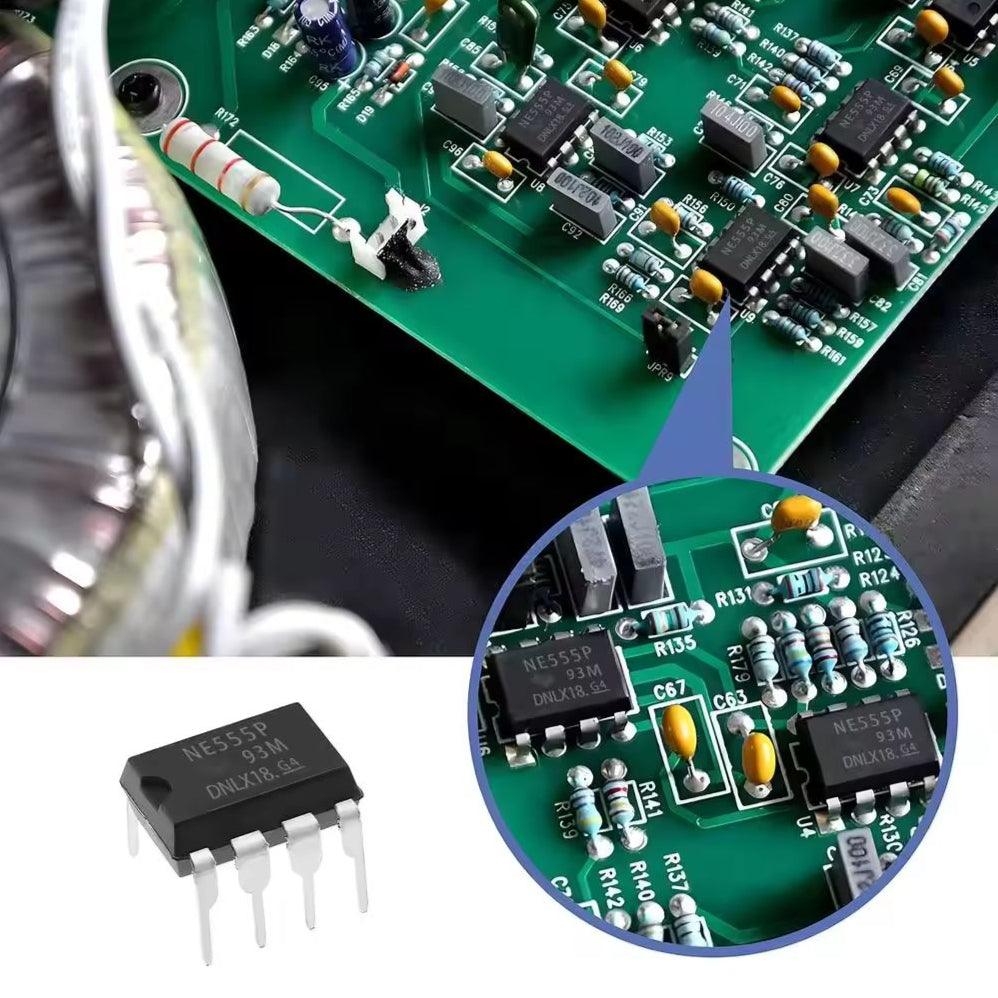
Understanding the NE555P Timer IC: A Comprehensive Guide
Partager
Understanding the NE555P Timer IC: A Comprehensive Guide
The NE555P timer IC is one of the most versatile and widely used integrated circuits in the world of electronics. Developed by Signetics in 1972, this chip has stood the test of time due to its reliability and simplicity. Whether you're a hobbyist or a professional engineer, understanding the NE555P can significantly enhance your ability to design and implement various electronic projects.
What is the NE555P Timer IC?
The NE555P is a highly stable device capable of producing accurate time delays or oscillation. It operates in two modes: Monostable (one-shot) and Astable (free-running). This flexibility makes it suitable for a wide range of applications, from simple timers to complex pulse generation.
Key Features of the NE555P
- Wide Supply Voltage Range: The NE555P can operate on a supply voltage ranging from 4.5V to 15V, making it compatible with both TTL and CMOS logic circuits.
- Adjustable Duty Cycle: The duty cycle can be adjusted by changing the external resistors and capacitors, allowing for precise control over timing intervals.
- High Output Current: With an output current of up to 200mA, the NE555P can directly drive LEDs, relays, and other components without the need for additional transistors.
- Temperature Stability: The NE555P maintains consistent performance over a wide temperature range, making it suitable for industrial applications.
Applications of the NE555P
- Timers: The NE555P is commonly used to create time delays in circuits. By configuring it in monostable mode, it can produce a single pulse of a specific duration when triggered.
- Pulse Width Modulation (PWM): In astable mode, the NE555P can generate a continuous square wave, which is useful for PWM applications such as motor speed control and dimming LEDs.
- Oscillators: The NE555P can function as a simple oscillator, generating a periodic waveform used in various signal generation tasks.
- Frequency Dividers: By cascading multiple NE555P timers, you can create frequency dividers that reduce the frequency of a signal by a specific factor.
Example Circuit: LED Flasher
One popular application of the NE555P is an LED flasher circuit. Here’s a simple example:
Components Needed:
- NE555P timer IC
- Resistors: 1kΩ and 10kΩ
- Capacitor: 100µF
- LED
- Power Supply: 9V battery
LED Flasher Circuit Diagram
- Connect pin 1 of the NE555P to the ground.
- Connect pin 8 to the positive terminal of the 9V battery.
- Place a 10kΩ resistor between pin 7 and pin 8.
- Place a 1kΩ resistor between pin 7 and pin 6.
- Connect pin 6 and pin 2 together.
- Connect the positive side of the 100µF capacitor to pin 2 and the negative side to the ground.
- Connect pin 4 to the positive terminal of the 9V battery.
- Connect pin 3 to the anode of the LED, and the cathode of the LED to a current-limiting resistor, then to the ground.

Circuit Description:
- Connect pin 1 of the NE555P to the ground.
- Connect pin 8 to the positive terminal of the 9V battery.
- Place a 10kΩ resistor between pin 7 and pin 8.
- Place a 1kΩ resistor between pin 7 and pin 6.
- Connect pin 6 and pin 2 together.
- Connect the positive side of the 100µF capacitor to pin 2 and the negative side to the ground.
- Connect pin 4 to the positive terminal of the 9V battery.
- Connect pin 3 to the anode of the LED, and the cathode of the LED to a current-limiting resistor, then to the ground.
When powered on, the LED will flash on and off at a rate determined by the resistors and capacitor values. This simple circuit demonstrates the NE555P’s ability to generate precise timing intervals.
Circuit Diagram
Here's a visual representation of the LED flasher circuit described above:
Where to Buy
You can purchase the NE555P Timer IC from Best DIY Geek.
Conclusion
The NE555P timer IC remains a cornerstone in the field of electronics. Its versatility, reliability, and ease of use make it an invaluable component for a wide range of applications. Whether you're building a simple timer or a complex pulse generator, the NE555P provides the functionality you need with minimal external components. Understanding its operation and applications can greatly enhance your electronic design skills.